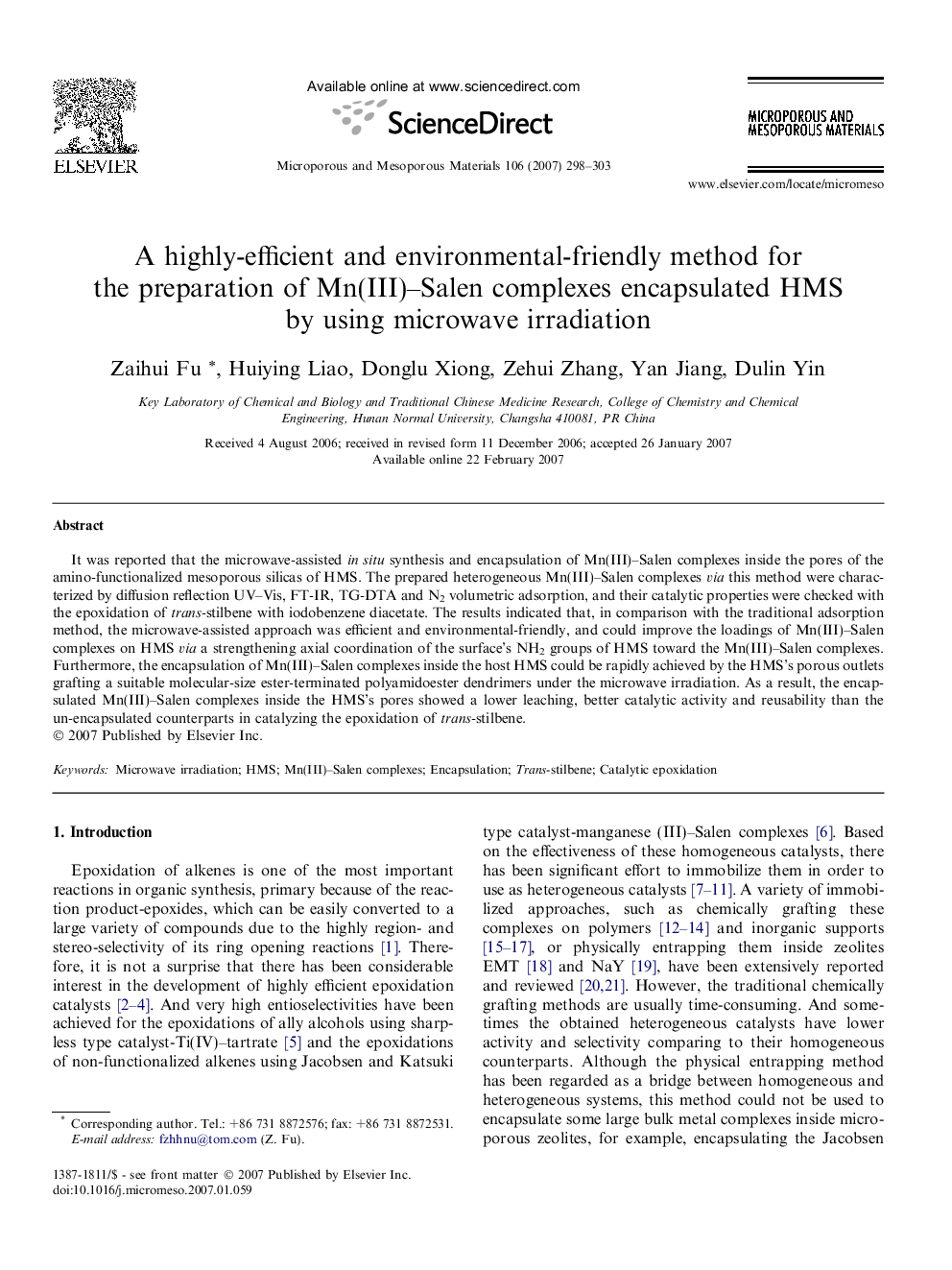| Article ID | Journal | Published Year | Pages | File Type |
|---|---|---|---|---|
| 76790 | Microporous and Mesoporous Materials | 2007 | 6 Pages |
It was reported that the microwave-assisted in situ synthesis and encapsulation of Mn(III)–Salen complexes inside the pores of the amino-functionalized mesoporous silicas of HMS. The prepared heterogeneous Mn(III)–Salen complexes via this method were characterized by diffusion reflection UV–Vis, FT-IR, TG-DTA and N2 volumetric adsorption, and their catalytic properties were checked with the epoxidation of trans-stilbene with iodobenzene diacetate. The results indicated that, in comparison with the traditional adsorption method, the microwave-assisted approach was efficient and environmental-friendly, and could improve the loadings of Mn(III)–Salen complexes on HMS via a strengthening axial coordination of the surface’s NH2 groups of HMS toward the Mn(III)–Salen complexes. Furthermore, the encapsulation of Mn(III)–Salen complexes inside the host HMS could be rapidly achieved by the HMS’s porous outlets grafting a suitable molecular-size ester-terminated polyamidoester dendrimers under the microwave irradiation. As a result, the encapsulated Mn(III)–Salen complexes inside the HMS’s pores showed a lower leaching, better catalytic activity and reusability than the un-encapsulated counterparts in catalyzing the epoxidation of trans-stilbene.
